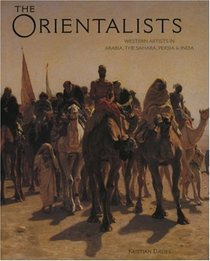Search -
The Orientalists: Western Artists In Arabia, The Sahara, Persia India
The Orientalists Western Artists In Arabia The Sahara Persia India
Author:
Foreword Magazine " ‘Orientalism,’ the brilliantly colorful art of the 1800s that captured the exotic Orient in striking and fascinating detail, "is ripe for redefinition," states Kristian Davies, adding that the initiative requires "a delirious energy, a tangible, uncomplicated enthusiasm." Possessing those qualities, he founded a pr... more »
Author:
Foreword Magazine " ‘Orientalism,’ the brilliantly colorful art of the 1800s that captured the exotic Orient in striking and fascinating detail, "is ripe for redefinition," states Kristian Davies, adding that the initiative requires "a delirious energy, a tangible, uncomplicated enthusiasm." Possessing those qualities, he founded a pr... more »
ISBN-13: 9780975978306
ISBN-10: 0975978306
Publication Date: 8/2/2006
Pages: 301
Rating: ?
ISBN-10: 0975978306
Publication Date: 8/2/2006
Pages: 301
Rating: ?
0 stars, based on 0 rating
Genres:
- Arts & Photography >> History & Criticism >> General
- Arts & Photography >> History & Criticism >> Regional >> Asian
- Arts & Photography >> Art >> Painting >> General
- History >> Africa >> Western Sahara
- History >> Asia >> India




